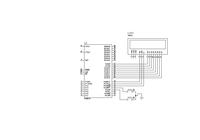go ahead
Junior Member level 1

hiii everyone..
i am trying to send 8 bit data through rf module(433 mhz)
but first i have to convert 8 bit data convert into 4 bit using 8051(AT89S52) through embedded c
i want the same data in receiver side as i send from transmitter side.
can somebody help me for the algorithm of this.
AT89S52 ---> HT12E---> rf TX(433 MHZ) ................. rf RX---->HT12D---->AT89S52---->LCD
plz help
i am trying to send 8 bit data through rf module(433 mhz)
but first i have to convert 8 bit data convert into 4 bit using 8051(AT89S52) through embedded c
i want the same data in receiver side as i send from transmitter side.
can somebody help me for the algorithm of this.
AT89S52 ---> HT12E---> rf TX(433 MHZ) ................. rf RX---->HT12D---->AT89S52---->LCD
plz help
Last edited:




